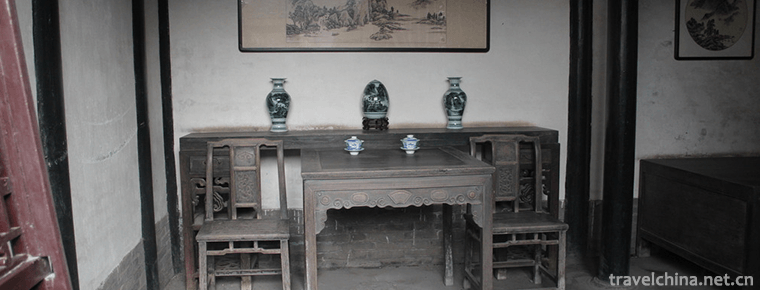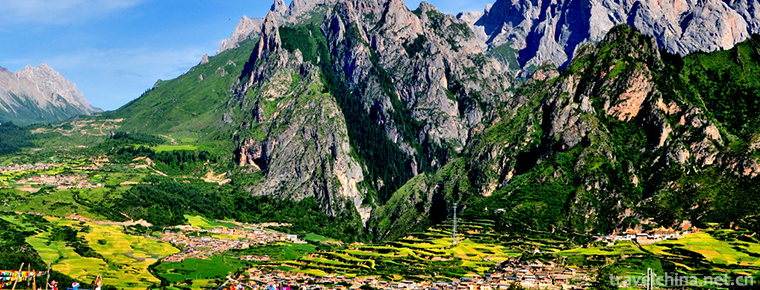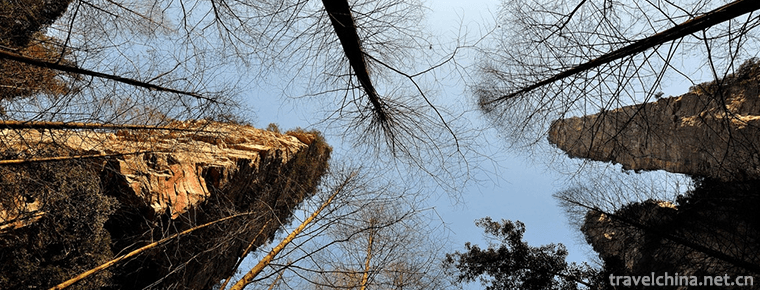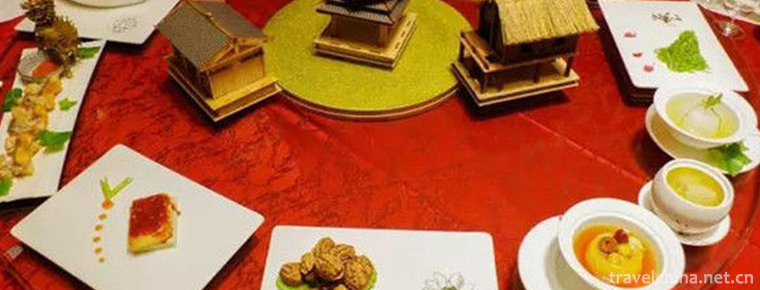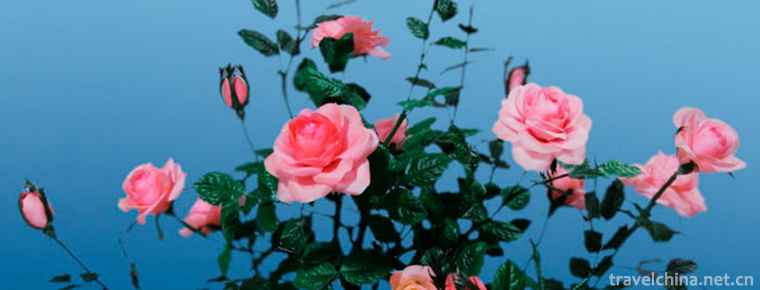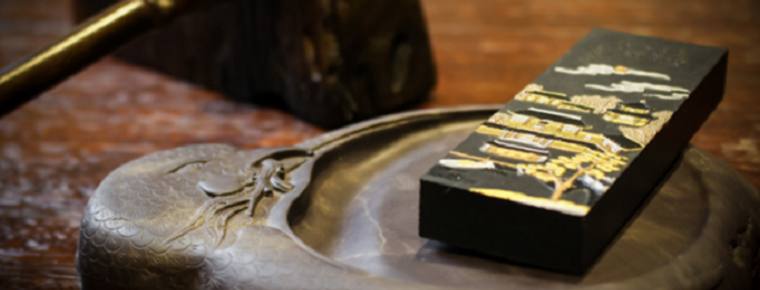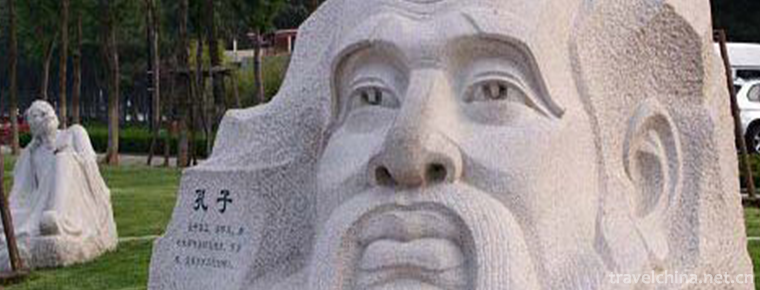Jinli Street
Jinli is a part of the Wuhou Temple Museum of Chengdu (Three Kingdoms Historic Relics Area, Jinli Folklore Area, West District). It covers an area of more than 30,000 square meters, has a construction area of more than 14,000 square meters, and has a street length of 550 meters. It takes the western Sichuan residences of the late Ming and early Qing Dynasties as its outer garment, and the three Kingdoms culture and Chengdu folk customs as its connotation. It integrates tourism, shopping, leisure.
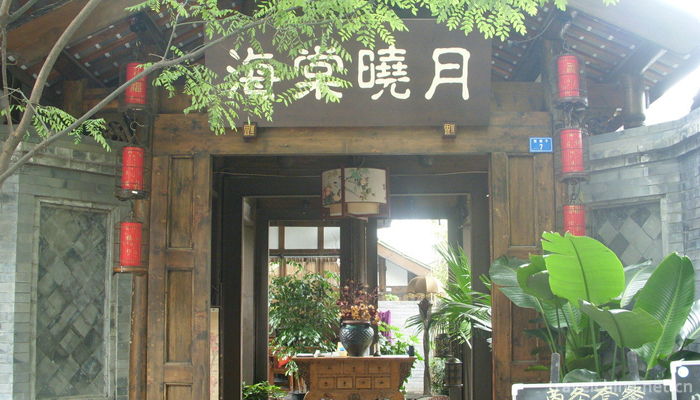
Legend has it that Jinli was one of the oldest and most commercial streets in the history of Western Shu. It was famous throughout the country as early as the Qin and Han Dynasties and the Three Kingdoms. Now, Jinli covers an area of more than 30,000 square meters, with a building area of more than 14,000 square meters and a street of 550 meters in length. It is a combination of tourism, shopping, leisure and entertainment, with the clothing of Western Sichuan dwellings at the end of Ming Dynasty and the beginning of Qing Dynasty and the connotation of the culture of the Three Kingdoms and Chengdu folklore.
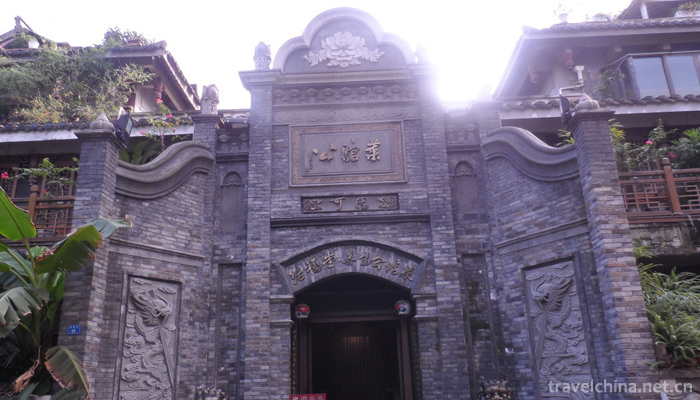
In 2009, the Jinli Street of Jinli Street extended to welcome visitors. The winding courtyards, streets and alleys echo the waterfront, lakes, lotus ponds and stone bridges. Theme clubs, theme restaurants and theme shops are located among them. The water waves and lights have a unique artistic conception.

Traditional weddings, folk music, dramas, folk costume shows and other folk performances are regularly held in ancient streets, and special thematic activities are held in accordance with traditional Chinese festivals, such as the Lantern Festival, the Dragon Boat Festival to eat Zongzi contest, the July Valentine's Day theme activities, the Mid-Autumn Festival to enjoy the autumn festival in an authentic atmosphere of Western Sichuan folk culture. The most comfortable way of entertainment.
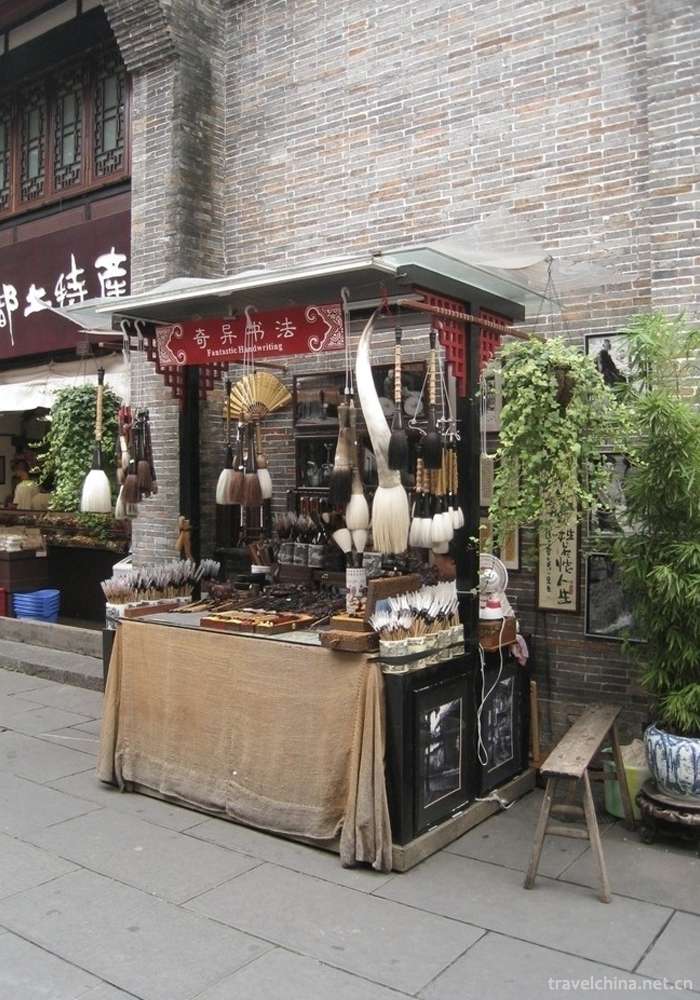
Legend has it that Jinli was one of the oldest and most commercial streets in the history of Western Shu. It was famous throughout the country as early as the Qin and Han Dynasties and the Three Kingdoms. Today Jinli relies on the Wuhou Temple in Chengdu, takes the spirit of Qin and Han Dynasties and the Three Kingdoms as its soul, takes the style of Ming and Qing Dynasties as its appearance, and takes the folkways and folk customs in Western Sichuan as its content, which enlarges the extension of the culture of the Three Kingdoms. In this street, the essence of Chengdu life is concentrated: tea houses, inns, restaurants, bars, theatres, flavor snacks, handicrafts, local specialties, fully demonstrating the unique charm of the culture of the Three Kingdoms and Sichuan folk customs.
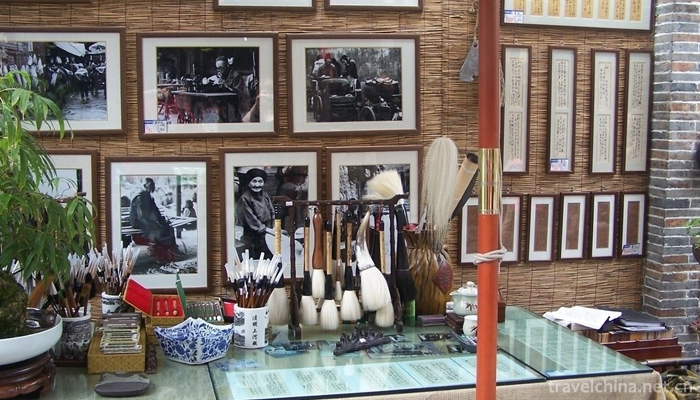
Jinli was restored by the Wuhou Temple Museum in Chengdu. As part of the Wuhou Temple (the historical relics of the Three Kingdoms, Jinli Folk Customs and Western District), the street is 550 meters long. It is a famous pedestrian mall in Chengdu. It is an antique building with the architectural style of the late Qing Dynasty and the early Republic of China. The main contents are the culture of the Three Kingdoms and the traditional folk culture of Sichuan. The layout of the ancient streets is rigorous and orderly. The bar entertainment area, famous Sichuan food and snack area, Fudi hotel area and Special Tourist Arts and crafts exhibition area are scattered. Jinli officially opened to the outside world in October 2004, and its extended section of Jinli Phase II (Jinli Waterfront) began to welcome visitors in January 2009. Jinli ancient street, one of Chengdu's cultural business cards, was upgraded. Jinli relies on Wuhou Temple and "Bai Wuhou Pao Jinli" has become one of the most appealing slogans for tourism in Chengdu. In 2005, Jinli was selected as one of the top ten commercial pedestrian streets in China. It was named "the first street of Xishu" and was honored as "the Chengdu version of Qingming Shanghe Tu". In 2006, Jinli Street was awarded the "national cultural industry demonstration base" by the Ministry of culture.
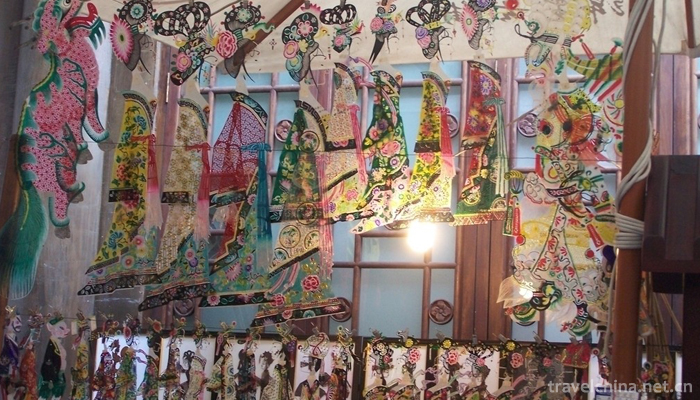
The shops sell chopsticks, tea, lanterns, silk quilts and local specialties. The delicacies in the restaurant are a flying beef, three cannons, fat sausage powder, a cup is for the sake of taste to go, not fancy, no gimmicks, pay attention to the cost. There are also craftsmen's play, pinch a clay man, turn a candy painting, buy a paper-cut, are all containing children's fun, nostalgia is also the memory of childhood simple happiness. A colorful street lantern and cover is a great custom. And the most eye catching thing on the street is the Chengdu powder that makes people think ardently. They are eating melon seeds and playing cards in the bar, drinking foreign wine, or soft Chengdu dialect.
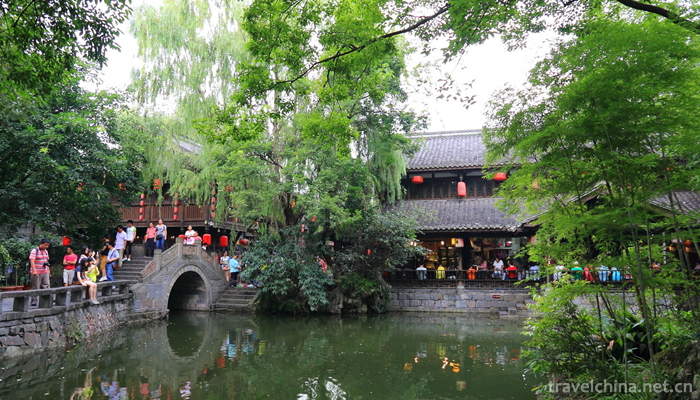
The people of Chengdu roamed in the brocade in a playful and relaxed way. The nostalgic people had an outlet for their feelings, and the people who loved to eat satisfied their appetite. Jinli Street is a scene of human life.
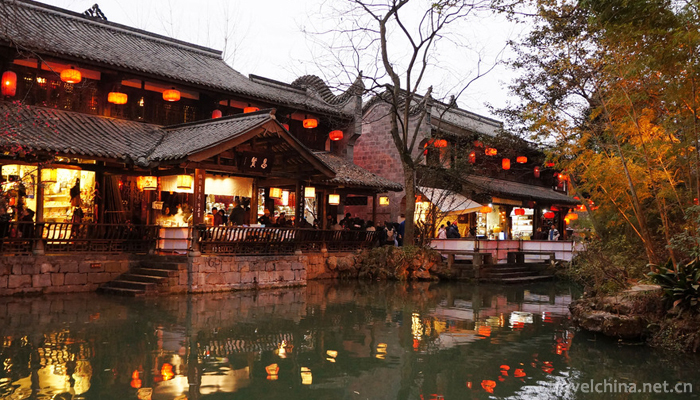
More pic
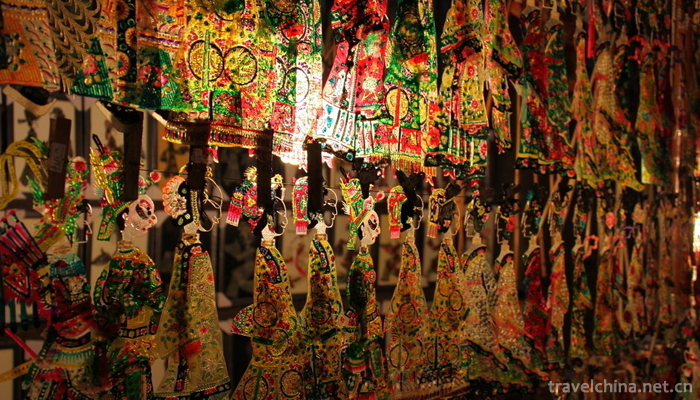
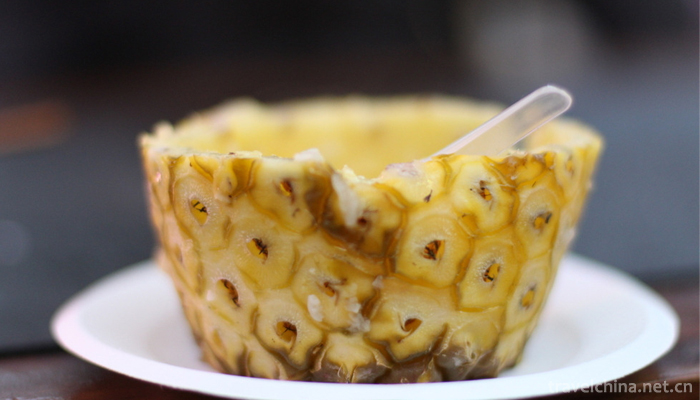
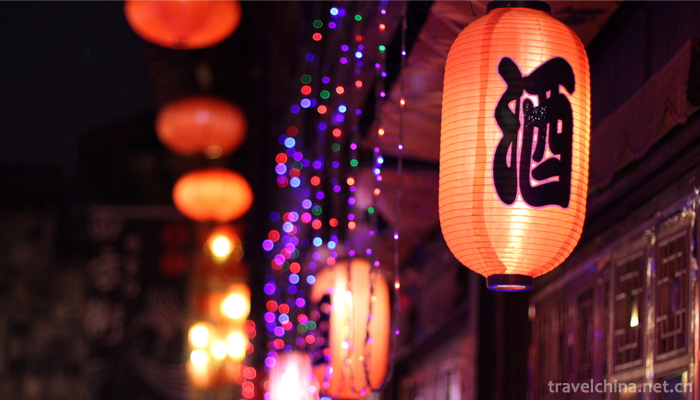
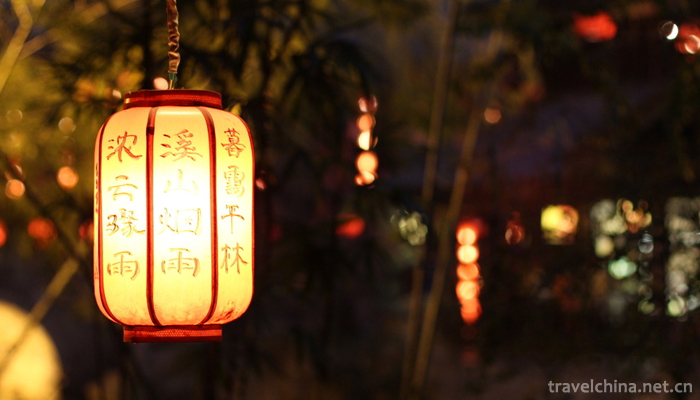

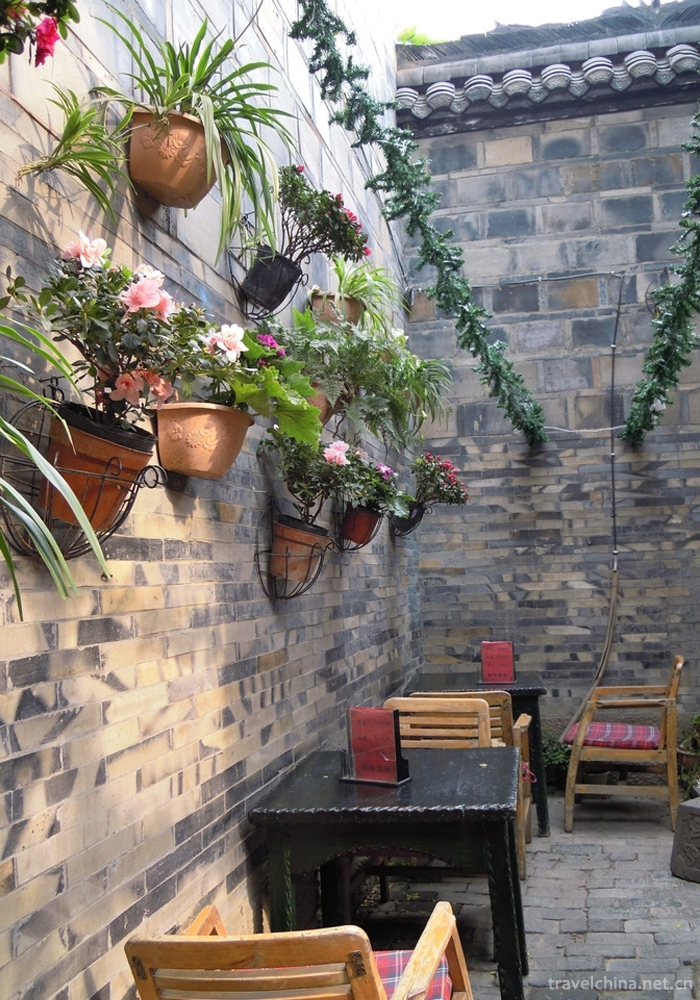
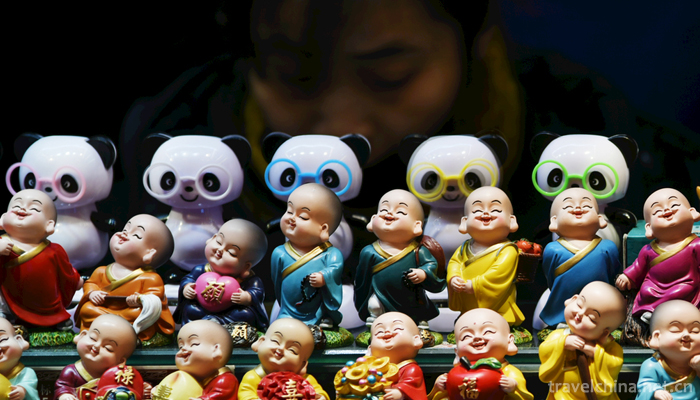
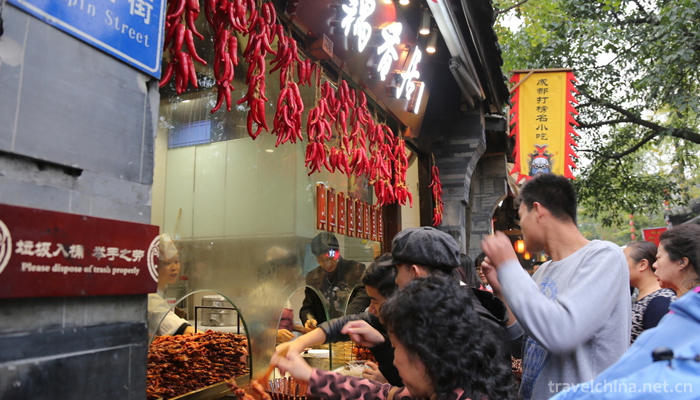
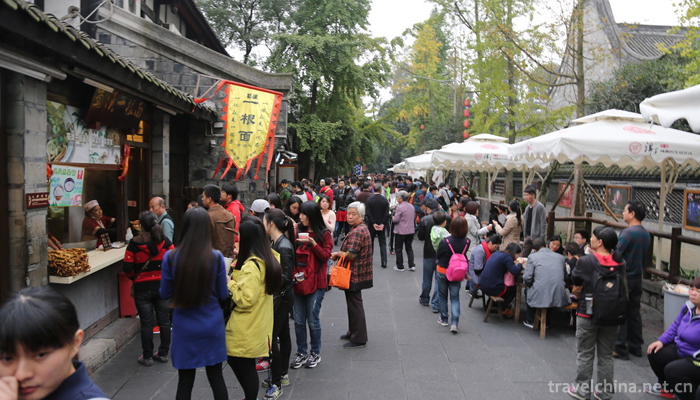
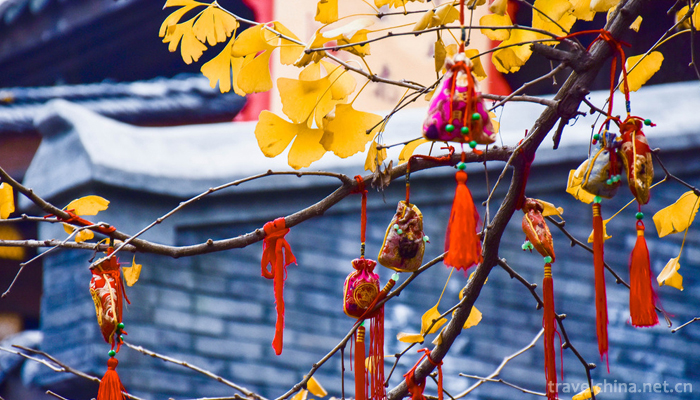
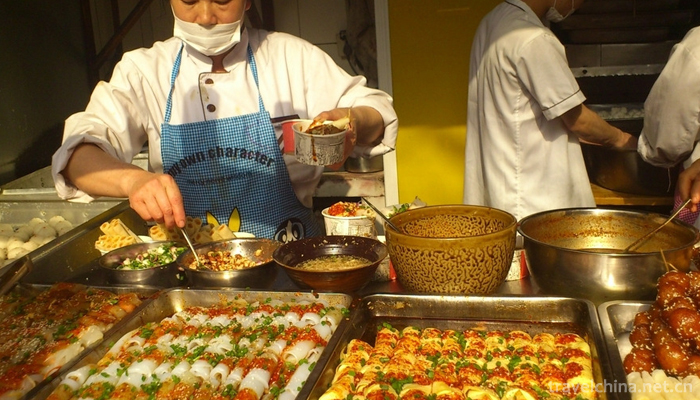
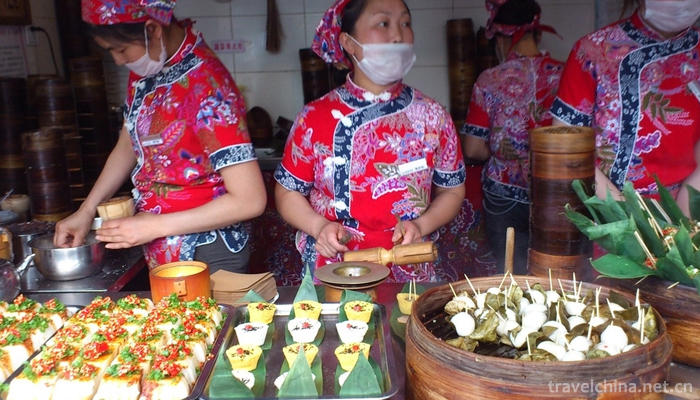
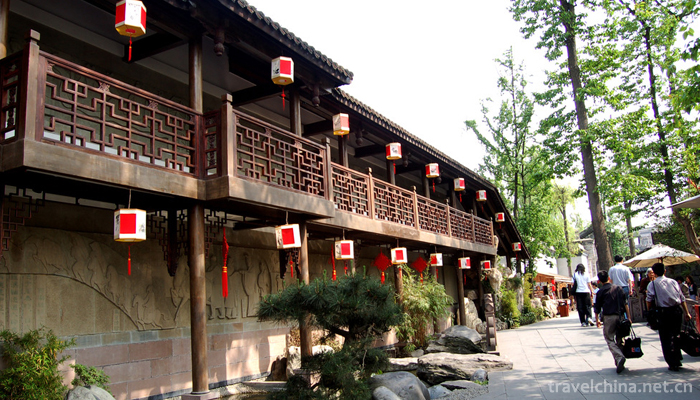
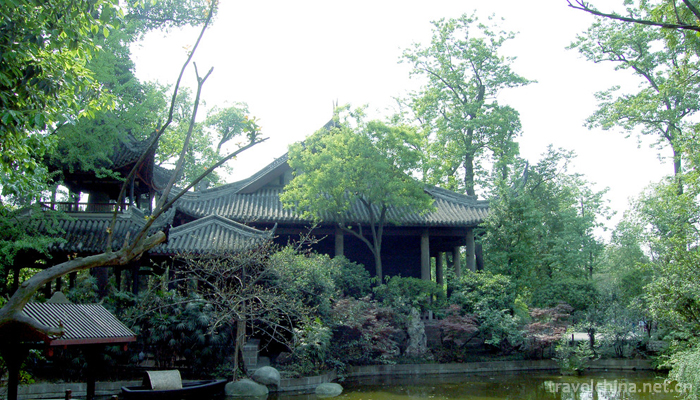

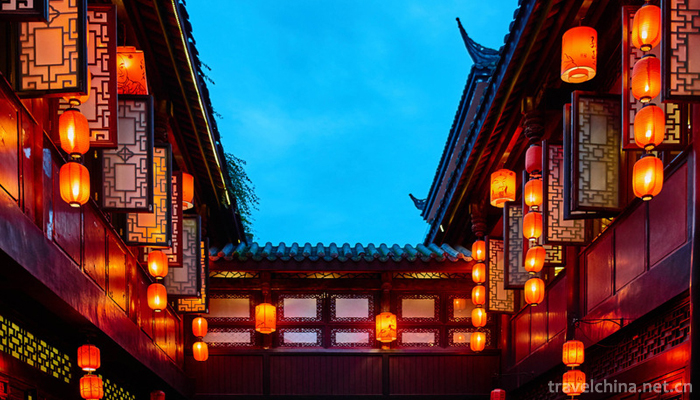
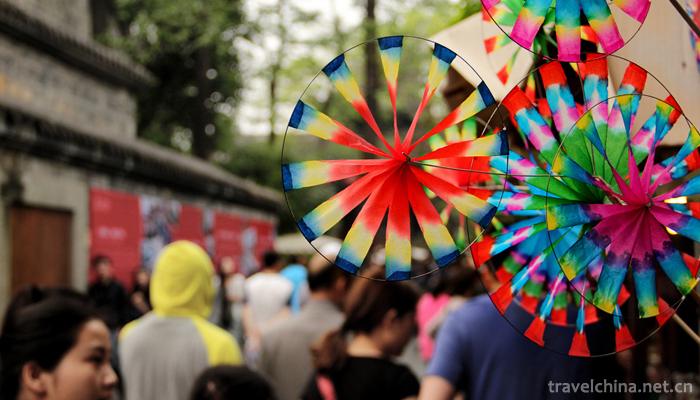

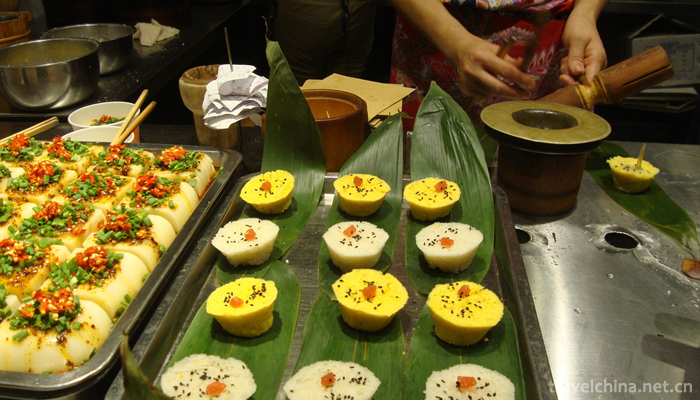
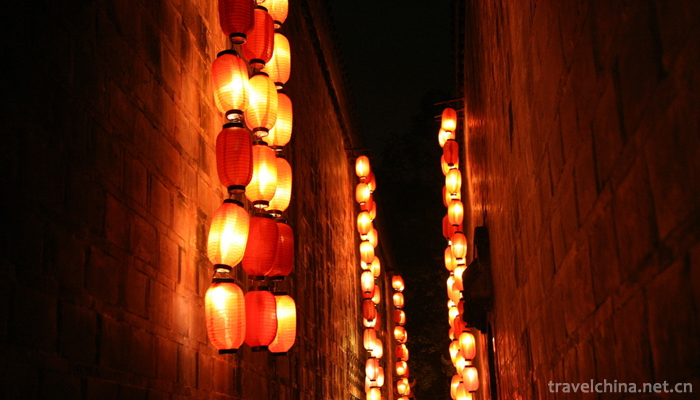
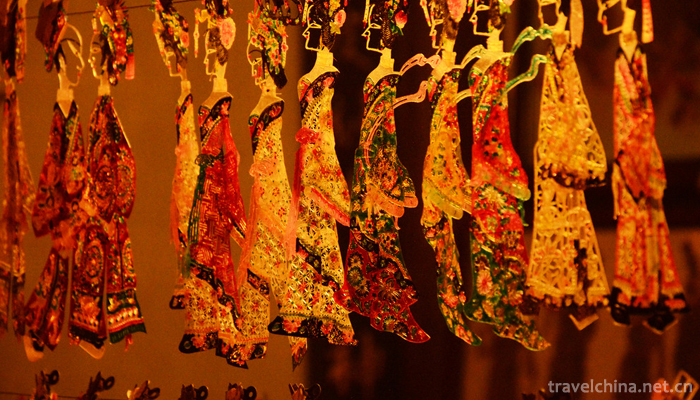
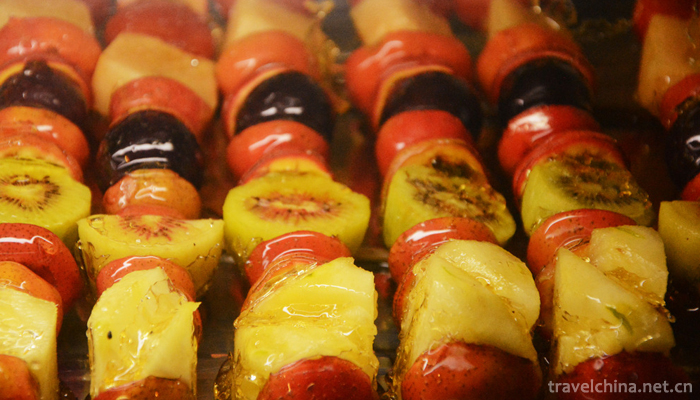
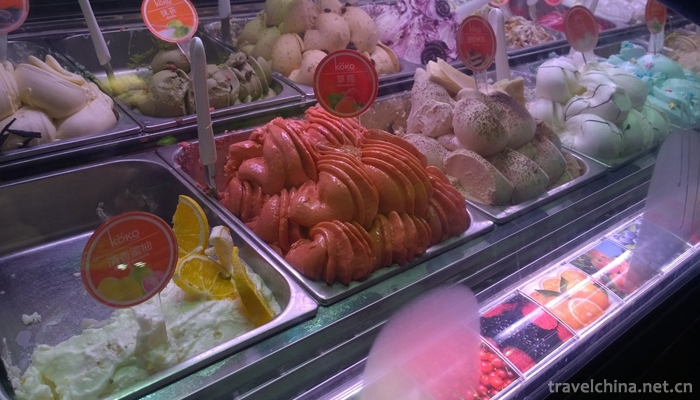
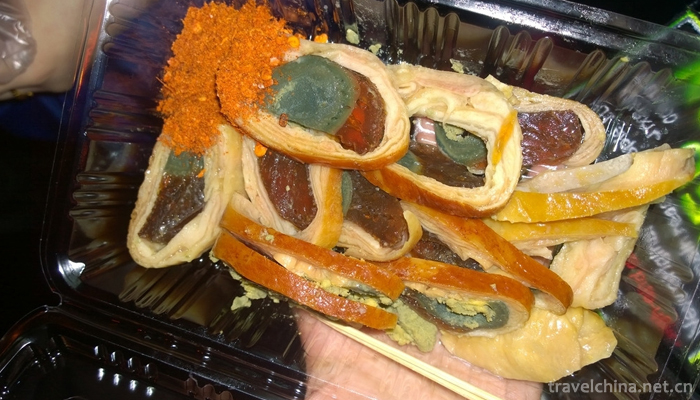
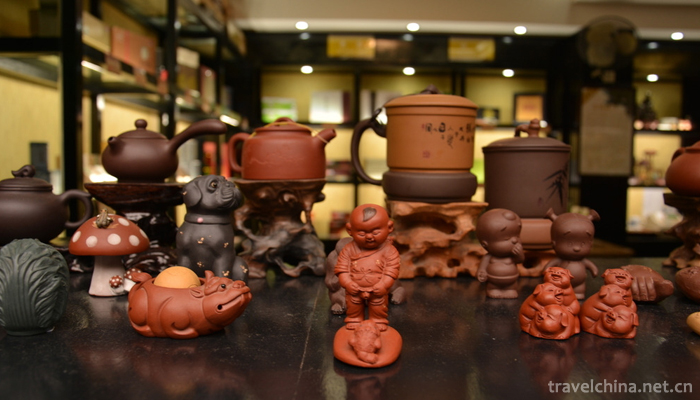
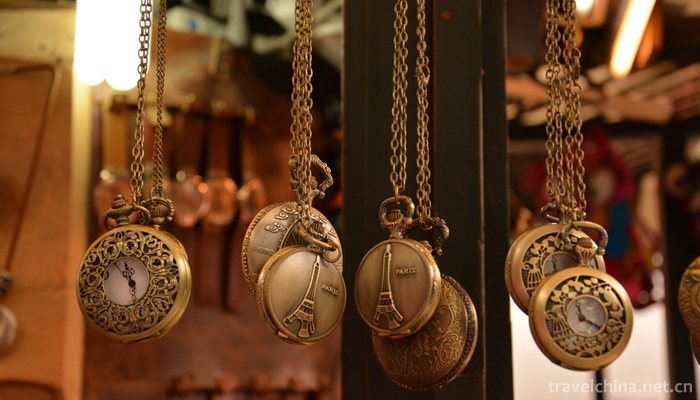
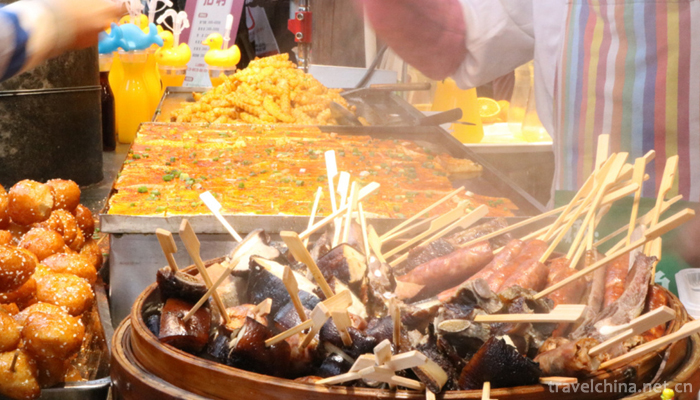
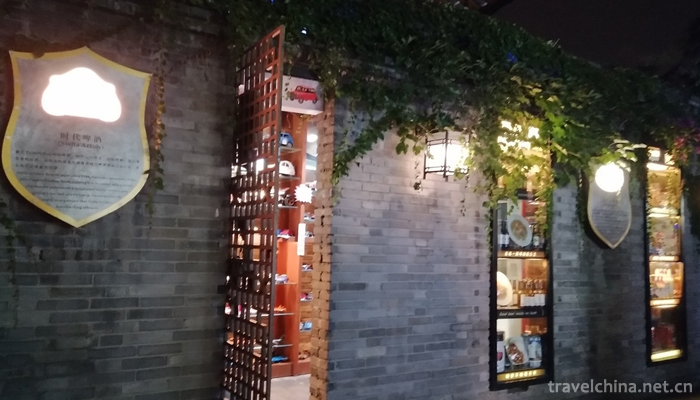
Address:No. 231, Wuhou Temple street, Chengdu, Sichuan,China
Telephone: +86-028-66311313
E-mail: cdjinli#163.com(@replace#)

Jinli Street
-
Beijing Roast DuckPeking duck
Roast duck is a world-renowned Beijing dish, which originated in the Northern and Southern Dynasties of China. It has been recorded in the Record of Food Treasures and was a palace food at that time.P
Views: 163 Time 2018-10-27 -
Tianmu Lake
Tianmu Lake is located eight kilometers south of Liyang City, Changzhou. It is named Tianmu Lake because it belongs to the remnants of Tianmu Mountain
Views: 163 Time 2018-12-06 -
Zhou Enlais Hometown Scenic Spot
Zhou Enlai's hometown scenic spot is located in Huai'an City, Jiangsu Province, a famous historical and cultural city in China. It is a national 5A-level tourist attraction.
Views: 212 Time 2018-12-06 -
Yellow River First Beach
Views: 184 Time 2018-12-22 -
Harbin Jinyuan Cultural Tourist Area
Harbin Acheng Jinyuan Cultural Tourist Area, the capital of Jin Dynasty from 1115 to 1234, is the only well-preserved capital site of Jin Dynasty. Up to now, the Royal City's Wumen Gate and palace bui
Views: 540 Time 2019-01-13 -
Eight Immortals
Raw materials: japonica rice, yellow millet, soybean, red adzuki bean, mung bean (fried with five flavors) 75 grams each. Fennel (washed) 150 grams, dried ginger, stir-fried white salt 30 grams each.
Views: 161 Time 2019-03-27 -
Beijing silk flower
Beijing silk flower, one of the traditional handicraft products in Beijing, also known as "Beijing flower", originated in Shenmuchang Street outside Chongwenmen in Ming Dynasty
Views: 189 Time 2019-04-04 -
Traditional Manufacturing Techniques of Tofu
The traditional craft of tofu production is a traditional handicraft with a long history. Refers to the various methods of making tofu, tofu can be fried and stewed at will, lasting
Views: 150 Time 2019-04-28 -
The Making Skills of Hui Ink
Hui ink production technology, Jixi County, Shexian County, Huangshan Tunxi District, Anhui Province, local traditional handicraft, one of the national intangible cultural heritage.
Views: 109 Time 2019-05-04 -
Jiujiang folk songs
Jiujiang folk song is a traditional folk song that is popular in the surrounding areas of Chengmen, Ma Huiling, Huanglao Men, Lion and Chengzi Town in Jiangzhou District, Jiujiang City
Views: 205 Time 2019-05-08 -
Quyang stone carving
Quyang stone carving is an important part of folk art in Quyang County, Hebei Province. Since the Western Han Dynasty, Quyang stone workers have used marble to carve steles and other objects. Quyang s
Views: 283 Time 2019-06-11 -
Geographical environment of Suining
Suining City is located in the middle of Sichuan Basin and the middle reaches of Fujiang River. It is between 105 ° 03 ′ 26 ″ - 106 ° 59 ′ 49 ″ E and 30 ° 10 ′ 50 ″ - 31 ° 10 ′ 50 ″ n.
Views: 191 Time 2020-12-16


